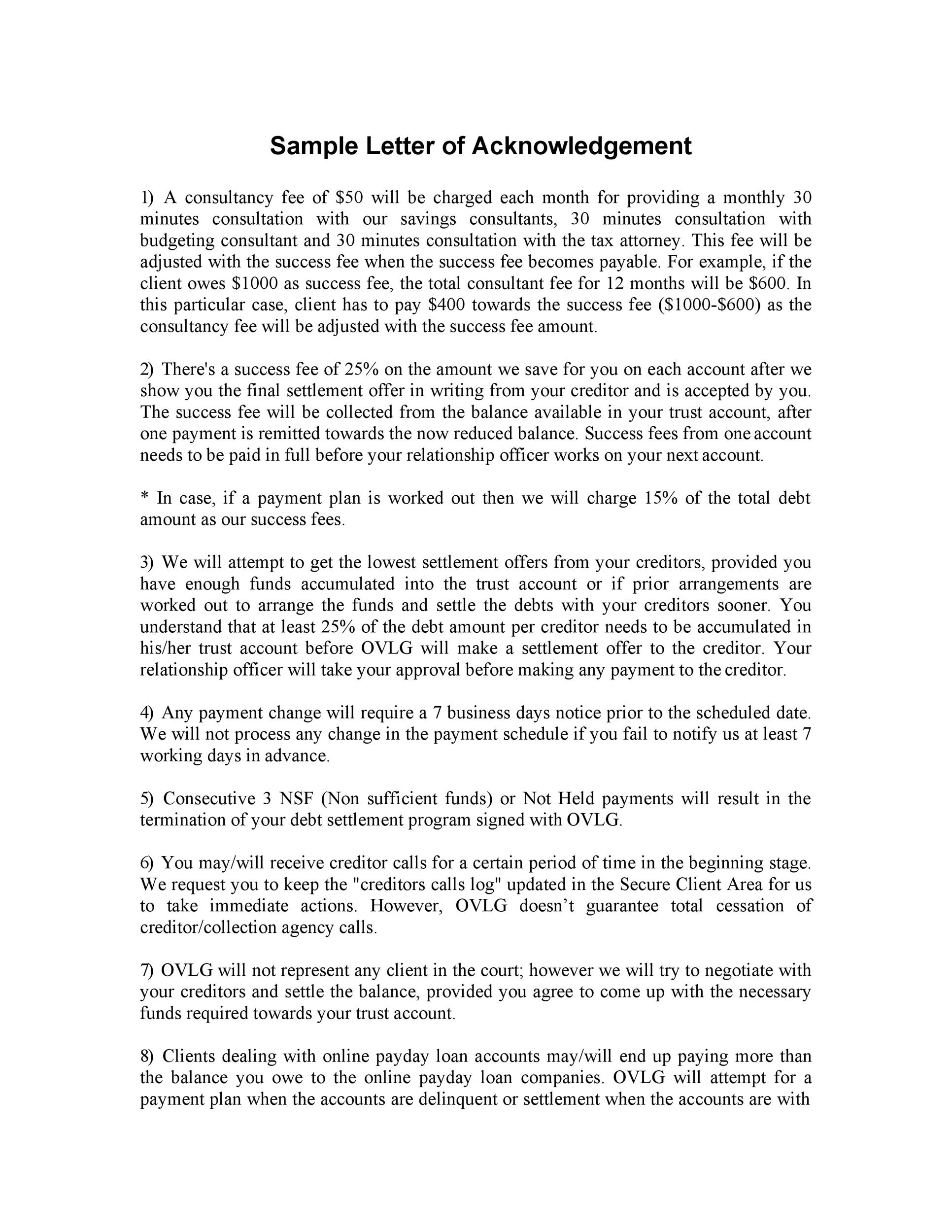Imagine you’ve poured your heart and soul into a research project, meticulously combing through data, analyzing findings, and crafting a compelling argument. You finally reach the end, ready to share your masterpiece with the world. But as you look at the manuscript, something feels missing. What’s the final touch that acknowledges the journey, the support, and the contributions that made your research possible?

Image: issuu.com
That’s where the power of acknowledgements comes in. They are more than just a formality; they are a sincere expression of gratitude and a testament to the collaborative nature of research. This article delves into the art of crafting impactful acknowledgements in your research paper, highlighting their significance and offering practical tips to guide your way.
A Heartfelt Thank You: The Power of Acknowledgements
Imagine a world where groundbreaking scientific discoveries, life-changing innovations, and inspiring artistic creations are the product of isolated individuals working in solitude. The reality, however, is far more vibrant and collaborative. Research, in all its forms, thrives on the support and contributions of many individuals and institutions, and acknowledging their roles is a fundamental ethical practice.
Beyond the ethical imperative, expressing gratitude through acknowledgements serves several practical purposes:
- Building Relationships: They foster stronger connections with mentors, colleagues, collaborators, and funding agencies.
- Showcasing Professionalism: They demonstrate your attentiveness to detail and respect for the contributions of others.
- Boosting Motivation: They inspire a sense of recognition and appreciation, boosting motivation and fostering a collaborative spirit.
- Promoting Transparency: They provide context and transparency, giving readers a glimpse into the intricate network of individuals and institutions that supported your research.
Crafting Compelling Acknowledgements: A Step-by-Step Guide
Now that you understand the essential role of acknowledgements, let’s delve into the practical aspects of crafting them effectively.
1. Identify Key Contributors: The Foundation of Gratitude
Begin by meticulously identifying all individuals and institutions deserving recognition. This may involve:
- Mentors and Advisors: Professors, research supervisors, and mentors who have guided your research journey through their expertise and encouragement.
- Collaborators: Colleagues, researchers, and team members who have contributed to the project, sharing their unique perspectives and skills.
- Funding Agencies: Organizations, foundations, and grants that provided financial support for your research, making it possible.
- Technical Support: Staff and individuals who provided invaluable technical assistance, such as data analysis, software expertise, or equipment maintenance.

Image: utaheducationfacts.com
2. Structure and Style: A Balancing Act
While the tone of acknowledgements should be sincere and grateful, maintaining a professional and academic voice is crucial.
- Keep it Concise: Avoid overly lengthy or flowery language. Strive for a concise and clear expression of appreciation.
- Focus on Contributions: Highlight the specific roles and contributions of each individual or institution. Instead of stating “Thank you for your support,” specify the nature of the support.
- Maintain Professionalism: Use formal language, avoiding overly informal or personal remarks.
- Avoid Redundancy: Avoid repeating the same type of acknowledgement for multiple individuals, especially if the contributions are similar.
3. Crafting Powerful Phrases: Expressing Gratitude with Impact
While the structure of your acknowledgements is important, the language you use plays a crucial role in conveying your heartfelt appreciation.
- Use Active Voice: Engage your reader with active voice verbs, such as “We are grateful to…” or “We appreciate the insightful feedback from…”
- Provide Context: Give readers a glimpse into the nature of the contribution. For example, “Dr. Smith provided invaluable guidance on the experimental design,” or “The research was funded by a grant from the National Science Foundation.”
- Use Descriptive Language: Go beyond simple gratitude to articulate the specific impact of their contributions. For instance, “The mentorship of Dr. Jones was instrumental in shaping my research methodology.”
4. Examples of Acknowledgements: From Generic to Specific
Here are a few examples to inspire your own acknowledgements, showcasing different categories and levels of detail:
Generic Acknowledgements:
- “We are grateful to the anonymous reviewers for their insightful comments and suggestions.”
- “This work was supported by a grant from the National Institutes of Health.”
More Specific Acknowledgements:
- “We are deeply indebted to [name] for their unwavering guidance and mentorship throughout the project.”
- “We would like to thank [name] for their invaluable assistance in data analysis and statistical modeling.”
- “We are grateful to [name] for providing essential technical support for the project, ensuring the smooth operation of the equipment.”
5. Review and Refine: Fine-Tuning Your Expression of Gratitude
Once you’ve drafted your acknowledgements, take a step back and critically assess them:
- Balance and Fairness: Ensure that all key contributors are acknowledged fairly and proportionally to their contributions.
- Clarity and Conciseness: Check for clarity, conciseness, and consistency in your language.
- Professional Tone: Maintain a professional and respectful tone throughout.
- Academic Style: Ensure your acknowledgements adhere to the style guide of the journal or conference you are submitting to.
Beyond the Pages: Acknowledgments as Seeds of Collaboration
While acknowledging contributions in your research paper is essential, your expression of gratitude goes beyond the printed page. Sharing your appreciation directly with individuals and institutions through personalized notes, emails, or conversations can strengthen relationships and cultivate future collaborations.
Example Of Acknowledgement In Research Paper Pdf
Conclusion: A Legacy of Gratitude
Crafting impactful acknowledgements is a powerful way to honor the contributions that have shaped your research. By recognizing and expressing gratitude to those who have supported your journey, you not only contribute to a culture of collaboration but also leave a lasting legacy of appreciation that inspires future generations of researchers. Remember, acknowledging contributions is not just a formality; it’s a vital act that fosters growth, collaboration, and a shared commitment to pushing the boundaries of knowledge. In the realm of research, where the pursuit of understanding is a collective effort, the power of acknowledgement shines brightest.






